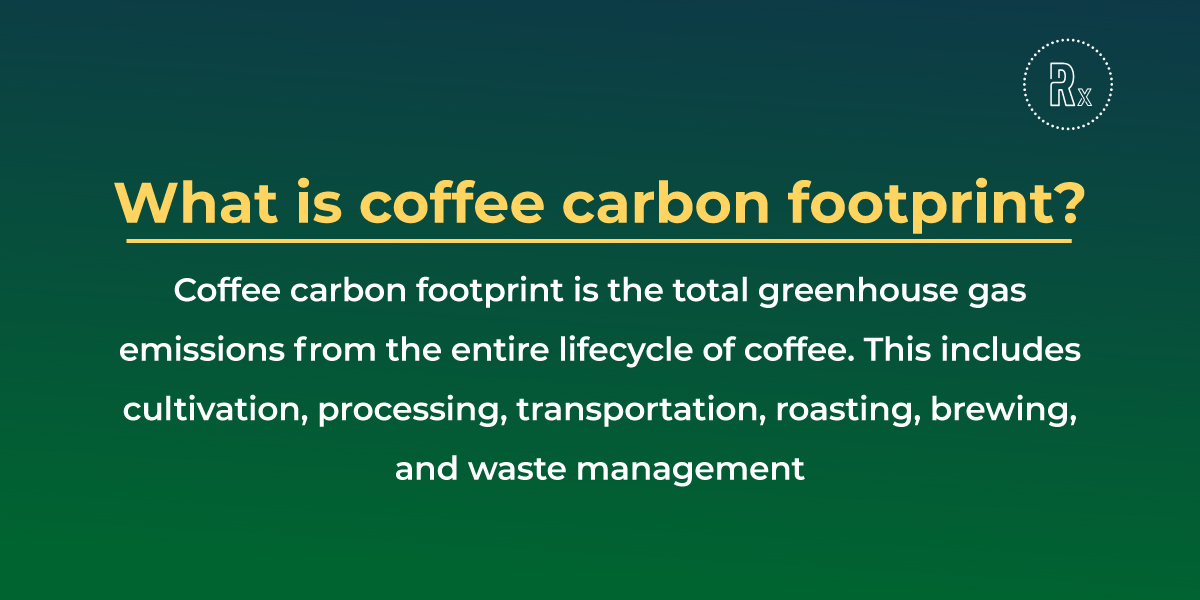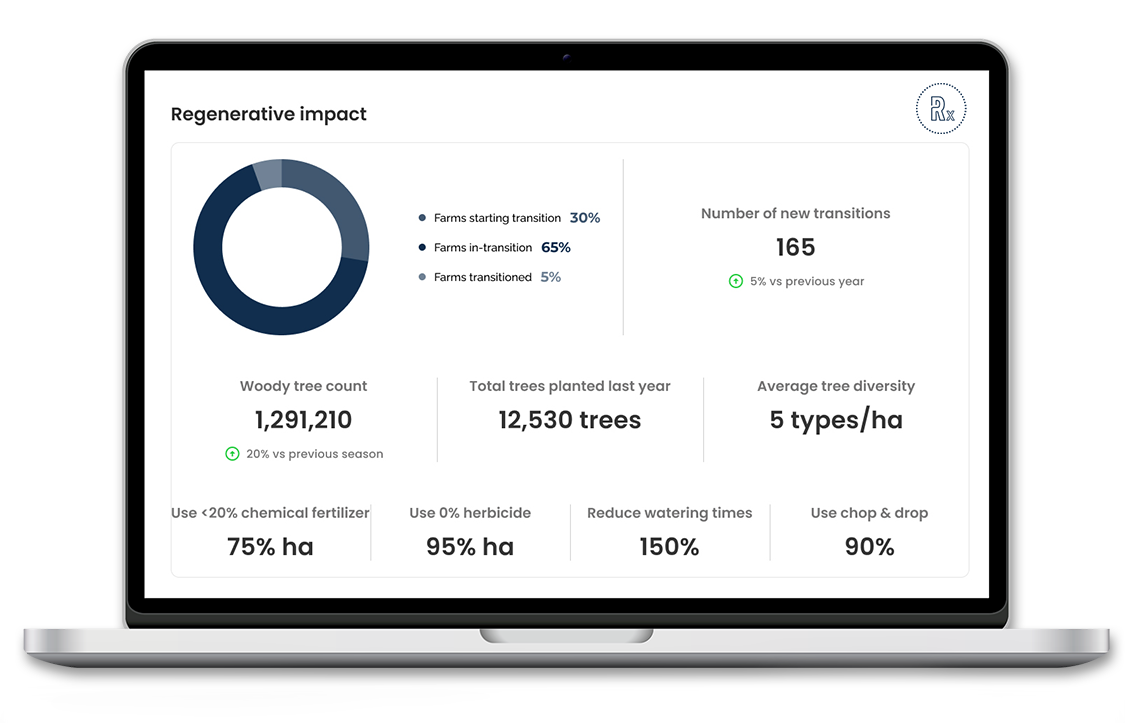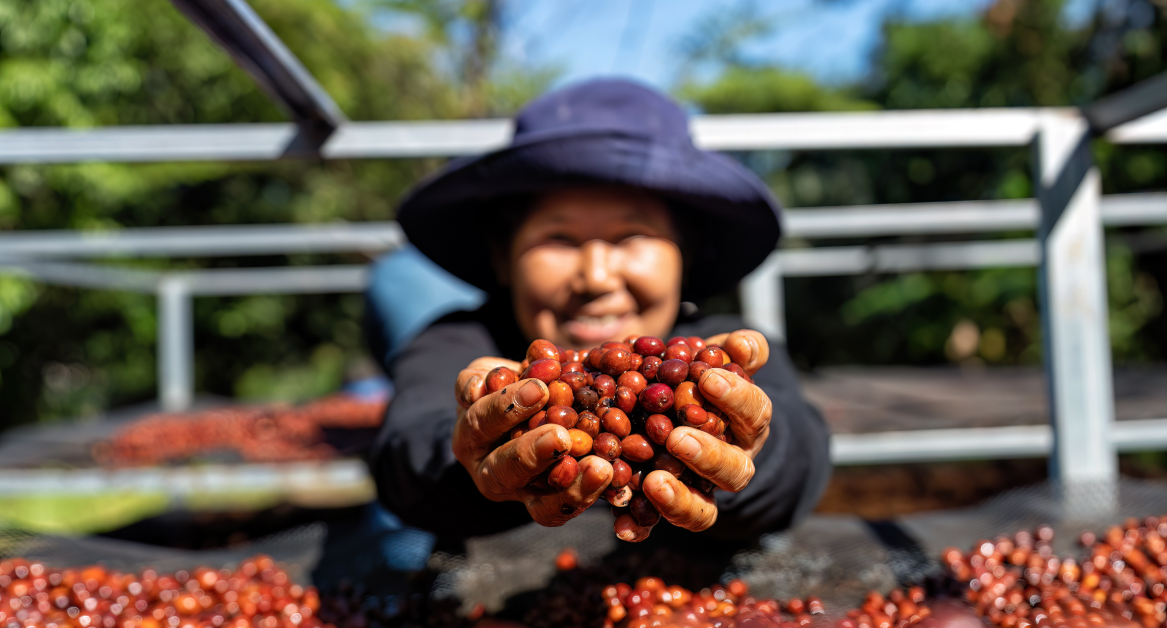A morning cup of coffee is a daily favorite for many worldwide. Yet, as global demand for coffee is expected to triple by 2050, this simple pleasure has a significant environmental impact, particularly regarding its carbon footprint. As global coffee demand rises, it’s crucial to understand and mitigate this impact.
This article delves into the carbon footprint associated with coffee, from production to consumption, and discusses practical ways to reduce it.
Through innovative approaches to sustainable agriculture and financial support, we’ll explore how both consumers and producers can contribute to a more sustainable coffee industry.
What is coffee carbon footprint?
First, we need to understand the term “Carbon Footprint”.
A carbon footprint is the total amount of greenhouse gases, primarily carbon dioxide, emitted directly or indirectly by an individual, organization, event, or product. It’s an essential measure in understanding the environmental impact of various activities. By calculating a carbon footprint, companies can identify key areas where greenhouse gas emissions occur and strategize ways to reduce them.

The carbon footprint of coffee includes all emissions. from its entire lifecycle, from growing to disposal. Each step, like farming, transporting, and brewing, adds to the total footprint.
The footprint can vary widely due to different farming methods, transport, brewing styles, and how consumers handle waste. The aim is to find and use more eco-friendly practices throughout coffee’s lifecycle to lower its carbon footprint.
12 factors contributing to coffee carbon footprint
The carbon footprint of coffee encompasses several critical stages, each contributing to overall greenhouse gas emissions:
- Agricultural practices: Traditional shaded coffee cultivation is shifting to intensive sun-exposed farming. This requires more irrigation, fertilizers, and pesticides, significantly increasing energy use and emissions.
- Land use changes: Conversion of forest land to coffee plantations can result in significant carbon emissions due to deforestation putting pressure on forests and other habitats.
- Processing and energy use: Roasting and grinding coffee beans consume energy. Packaging also contributes to the carbon footprint.
- Roasting and packaging: These processes consume energy and produce waste materials.
- Transportation: Global shipping of coffee beans and local transport involve substantial fuel consumption, adding to emissions.
- Supply chain efficiency: The efficiency of the supply chain, including storage and distribution methods, plays a role in the total carbon emissions.
- Water management: Coffee processing’s water usage and wastewater management are vital contributors to its carbon footprint.
- Consumer habits: Methods of preparing and consuming coffee, including the brewing of coffee and water used, impact its carbon footprint. Optimizing these amounts can be more environmentally friendly.
- Waste management: Disposing coffee grounds and packaging materials can have varying environmental impacts, depending on the methods employed.
- Regional variations: Different regions have varying carbon emissions due to distinct farming practices, transportation needs, and coffee types (like Robusta).
- Collective action: The industry needs collective action and innovation to reduce emissions, including adopting new technologies and practices.
- Carbon sequestration focus: There’s an emphasis on exploring carbon sequestration opportunities at the farm level, improving agroforestry systems, and leveraging carbon insetting strategies.
🚀 Read more Inset vs Offset: Understanding the Differences in Carbon Strategies
Strategies for reducing coffee’s carbon footprint
To provide you with proven tactics, the webinar, hosted by USA Green Invest Asia and the Global Coffee Platform, has highlighted the collaborative strategies of various stakeholders in developing a low-carbon coffee production model.
Key topics included advancements in land use, innovative financing, and the importance of industry-wide standardized approaches to manage and reduce emissions effectively in coffee production.
Here are 9 key strategies summarised for you:
Collaborative approach
The collaborative efforts among various stakeholders (coffee buyers, suppliers, producers) are pivotal to reducing greenhouse gas emissions in the coffee supply chain. For instance, the synergy between coffee buyers, suppliers, and producers in addressing greenhouse gas emissions is crucial. A tip here is to foster partnerships across the supply chain to share best practices and innovative solutions.
Sustainable business model investments
Investing in sustainable business models can lead to a substantial decrease in land-use change emissions. Examples include supporting sustainable farming techniques and investing in renewable energy sources for processing and transportation.
Companies can incorporate RegenX as a sustainable link into their business model. By offering innovative agricultural financing, RegenX encourages adopting regenerative farming practices. Our approach includes providing accessible pre-harvest financing to support regenerative agriculture practices for coffee farms in Vietnam, thus protecting the soil and enhancing local farmers’ lives.
For a holistic view of what we do please visit us at regenx.ag
Establishing carbon footprint baselines
Accurately measuring the current carbon footprint of coffee production areas is essential. The study in Vietnam and Indonesia serves as a model, showing the importance of identifying key emission sources for targeted actions.
Key findings from the study are:
- Central Highlands, Vietnam: Here, the carbon footprint was found to be 1.83 kg CO2e per kg of green coffee beans. The significant factors contributing to this footprint included fertilizer use, energy consumption, especially for irrigation, and the management of residues from coffee processing.
- Southern Sumatra, Indonesia: In this region, the carbon footprint was higher, at 2.38 kg CO2e per kg of green coffee beans. The primary sources of emissions were fertilizer use, transportation, and residue management.
Other regions could adopt similar methodologies for precise baseline establishment.
Awareness and capacity building
Raising awareness and enhancing the capacity of those in the coffee sector to confront climate challenges effectively is crucial. Companies need to determine educational initiatives and training programs to equip stakeholders with the knowledge of sustainable practices. This can include:
- Educational initiatives: Offering courses and workshops
- Farmer training programs: Implementing field-level training
- Supply chain stakeholder workshops: Conducting workshops for traders, roasters, and retailers
- Community engagement: Engaging local communities in environmental conservation activities.
- Online resources and toolkits: Developing and distributing educational materials and toolkits.
- Collaborative learning platforms: Establishing platforms for knowledge sharing and collaboration.
Improved land use and management:
Integrating agroforestry practices, where crops are grown among trees, offers significant carbon sequestration benefits. Efficient fertilizer use, embracing slow-release and organic options, reduces nitrous oxide emissions. Sustainable irrigation, such as drip systems, conserves water and energy. These practices collectively contribute to a more balanced ecosystem and lower carbon emissions.
Utilizing data and metrics
Tools like the Cool Farm tool offer valuable insights into farm-specific emission profiles. By tracking variables like fertilizer use, irrigation methods, and crop types, farmers can make informed decisions to optimize their practices and reduce their carbon footprint.
Industry-wide standardized approaches
Adopting universal standards for emission tracking ensures consistency and comparability across the coffee sector. This approach fosters transparency and accountability, making it easier to gauge the collective impact of emission reduction efforts and to identify areas for improvement.
Examples of such standards could include the Greenhouse Gas Protocol, the ISO 14001, or specific frameworks developed by industry collaborations like the Sustainable Coffee Challenge or the Global Coffee Platform.
Integration of climate finance and digital solutions
Incorporating climate finance and digital solutions plays a pivotal role in reducing emissions in the coffee sector. Digital tools offer up-to-date insights on climate impacts and efficient resource management.
Platforms like RegenX, an agricultural financing platform, are at the forefront of this integration. RegenX provides vital support to farmers adopting regenerative practices by offering pre-harvest financing and a proprietary data platform to enhance regenerative methods and reduce financing risks.

This approach, which includes climate-focused investments like green bonds, accelerates the deployment of technologies and practices that significantly contribute to emission reduction in the coffee industry.
Reducing coffee carbon footprint with a strategic mindset
In addressing the carbon footprint of the coffee sector, it’s evident that multifaceted strategies are essential. This includes better land use, using data for smart choices, and setting industry-wide standards to cut emissions effectively.
Furthermore, the integration of climate finance and innovative digital solutions, exemplified by platforms like RegenX, highlights the power of technology and financial support in transforming agricultural practices. Finally, supporting farmers, alongside ongoing research and development, ensures that the sector remains responsive and progressive.



